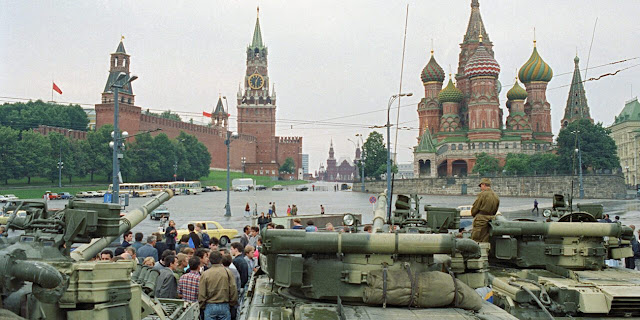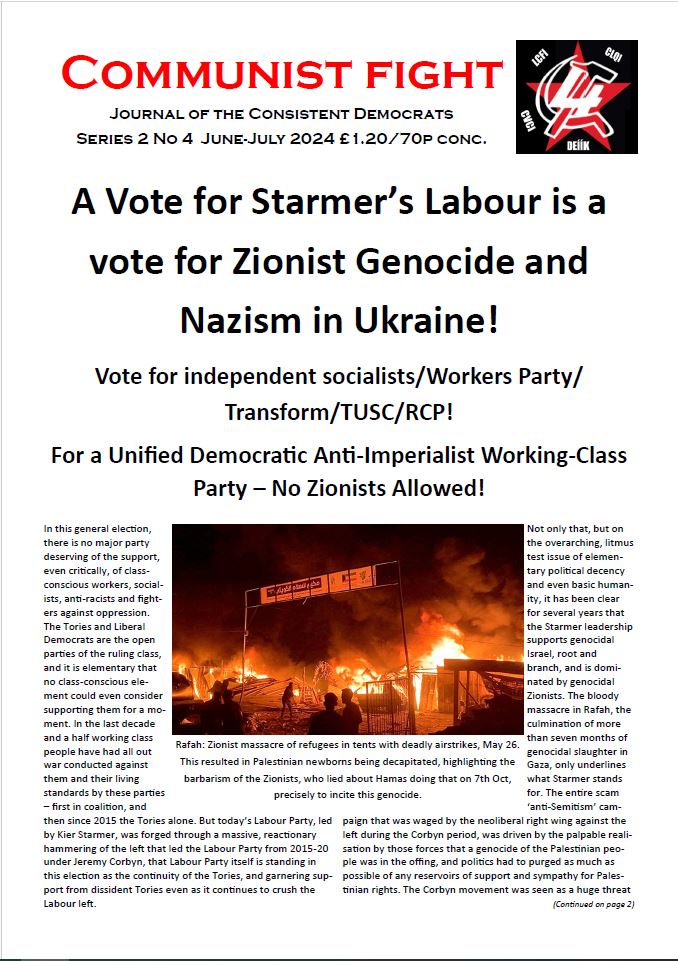
The counter-revolution in the USSR was not fought, not even admitted and even less studied by those who claim to be revolutionaries today, beyond rare exceptions.

The final destruction in the USSR, after 74 years of existence, in August 1991, was the biggest defeat of the working class and the communists in the last 50 years. It is necessary to recognize this truth and say it however bitter it may be. This is a starting point for understanding the current reality for those who want to change it, for anyone who has the fight for communism as a strategy. The lessons of this defeat are as or more important for our time as the lessons of October 1917 and the causes of bureaucratic degeneration in the following decades. Like revolution, counterrevolution needs to be studied. A clear understanding of the liquidation of the USSR serves the struggles of the present and the future. We claim the USSR and the set of experiences of workers states created in the 20th century, criticising the limitations and deviations committed.
The crisis that led to the final liquidation of August 1991 was a consequence of the exhaustion of the USSR economy, compromised by:
1. Isolation of the USSR (attenuated by the existence and relationship between the USSR and part of the other workers’ states), aggravated by the policy of “socialism in one country”, on the one hand, and by the permanent economic war of boycotts, sanctions and blockades of imperialism, on the other;
2. By the arms race, as a war economy. If investment in destructive forces is beneficial to the imperialist political economy, the same economic policy exhausts the productive forces of a workers’ state. In this context, the involvement of the USSR in the Afghan War, with the concentrated war effort, was the coup de grace, falling into the trap of imperialism (explained in “The adventure of imperialism in Afghanistan was a blow against the revolution “);
3. By conciliation, bureaucratic indebtedness, liberal measures, dismantling of planning and control of foreign trade over the 74 years that led to Perestroika and Glasnost;
4. Finally, the complete liquidation of bodies of workers’ democracy by Stalin’s bureaucratization, continued by Khrushchev, Brezhnev, Andropov, and Gorbachev, meant that in the decisive battle in which the bureaucracy was divided between restorationists and conservatives there were no independent mass bodies of the two wings to fight for a destiny that would serve the immediate and historical interests of the majority of the population of the USSR.
The collapse of Yanayev’s bureaucratic coup (explained by us in ” The Soviet bloc’s counter-revolution still traumatizes humanity “) and Yeltsin’s restorationist counter-coup imposed historic defeat and started the plunder of the workers state and 14 other republics by imperialist finance capital . According to the geopolitical writer William Engdahl, in his work Manifest Destiny – Democracy as Cognitive Dissonance (2018):
“Boris Yeltsin and his “free market reformers” were part of one of the most criminal undercover looting operations in CIA history. It was the rape of Russia by a corrupt circle of treacherous Soviet generals, together with their young KGB squad protégés, who were turned through the operation into billionaire oligarchs. This economic rape was only possible through Western banks and Washington’s so-called “machines of democracy” under three successive presidents – Ronald Reagan, George HW Bush and Bill Clinton.
William Engdahl, in his work “Manifest Destiny – Democracy as Congnitive Dissonance”, p. 29, 2018.

The tragedy was not limited to the economic field or to the peoples of the former USSR, it reached the last generations of social fighters and was also a political and theoretical-ideological tragedy for the world proletariat.
In terms of theory, the counterrevolution potentiated the most effective anti-communist propaganda machine since the McCarthyism in the US in the 50s. Neoliberalism, postmodernism, identitarism, are variants of this anti-communist ideological offensive, catapulted by these counterrevolutionary processes, although they are schools of conservative or reactionary thinking that were created before the processes of 88-91.
Within the workers’ movement and the majority leaderships of the mass and left-wing movements, this offensive contributed to a qualitative leap in the bourgeoisification of social democracy and the consolidation of conciliatory leaderships. This defeat is also expressed in the abortion, or precocious decay of the processes of accumulation of class consciousness since the victory in Vietnam in 1975.
In the last almost five decades, none of the revolutionary processes have resulted in the expropriation of the bourgeoisie as a class in any country, nor in the conquest of power by the working class, just check the revolutionary processes in Iran, Nicaragua, Burkina Faso … the deformed way in which the post-1917 revolutionary processes occurred, especially after the Second World War. This period of relatively short setbacks in historical terms makes many contemporary social fighters believe that the social revolution is an outdated phenomenon. For many of the new generation, the 20th century would not have ushered in the era of proletarian revolutions. They just believe that proletarian revolutions were a phenomenon unique to the last century.
Trotskyism, critical of the hegemonic and traditional leaderships and which could have assumed a leading role in the struggles with the retreat of social democracy and Stalinism, did worse than the first two trends. Confusion reigned in Trotskyism, the charlatanism of selling defeat as victory, indifference to the valuable achievements of the past in the class struggle. Almost all self-proclaimed Trotskyism celebrated with imperialism the end of the USSR and almost all workers’ states.
In terms of economic policy, the majority trend in most nations and moments was the loss of political, economic and social rights for workers, which is generically agreed to be called neoliberalism or globalization.
On the defensive, disorganized, without parties that would at least help it to distinguish allies from enemies, victories from defeats, the proletariat accumulated losses in all terrains: organizational, in conscioiusness, in living conditions. Which also impacted on the backward sections, the consciousness of certain fractions of the proletariat receded from conservatism to new versions of reactionary (neo-fascism, Trumpism, Bolsonarism).
The militant communist, revolutionary and internationalist forces represent only a small minority of the workers’ movement today. But they were never in the majority, not even in revolutionary periods. With determination, a dialectical and materialist understanding of history, a willingness to fight for programmatic clarity, it is possible to regroup revolutionary cadres prepared for the struggle in the current situation and for new social revolutions.

